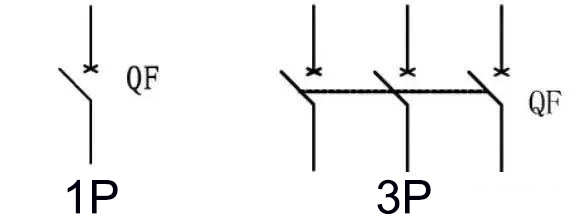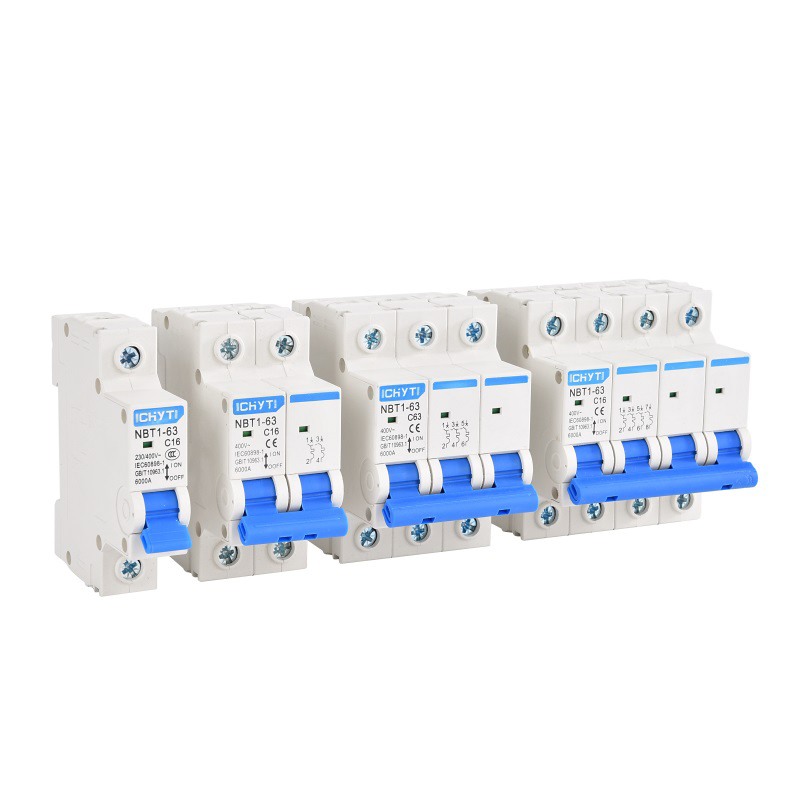
- English
- Español
- Português
- русский
- Français
- 日本語
- Deutsch
- tiếng Việt
- Italiano
- Nederlands
- ภาษาไทย
- Polski
- 한국어
- Svenska
- magyar
- Malay
- বাংলা ভাষার
- Dansk
- Suomi
- हिन्दी
- Pilipino
- Türkçe
- Gaeilge
- العربية
- Indonesia
- Norsk
- تمل
- český
- ελληνικά
- український
- Javanese
- فارسی
- தமிழ்
- తెలుగు
- नेपाली
- Burmese
- български
- ລາວ
- Latine
- Қазақша
- Euskal
- Azərbaycan
- Slovenský jazyk
- Македонски
- Lietuvos
- Eesti Keel
- Română
- Slovenski
- मराठी
- Srpski језик
Low voltage circuit breakers
2023-12-20
Circuit breaker
This mainly refers to miniature circuit breakers and automatic air switches. Switch type electrical appliances belonging to current limiting control include frame type DW series (universal) and plastic shell type DZ series (device type). Usually used to control the on/off of power supply lines, it is divided into single pole circuit breakers and three-stage circuit breakers. It also has functions such as short circuit and overload protection, but generally does not have leakage protection and lightning protection functions.
Mainly used for infrequent connection and disconnection of circuits under normal working conditions, and can automatically disconnect circuits in case of overload, short circuit, and voltage loss. It can be used as overload and short circuit protection for AC and DC lines, and is widely used in building lighting, power distribution lines, electrical equipment, and other occasions, as a control switch and protection equipment. It can also be used for infrequent starting of electric motors and for operating or switching circuits.
1. Graphical and textual symbols

2. Performance indicators and selection of air switches
The main indicators of air switch performance include breaking capacity and protection characteristics.
Breaking capacity refers to the maximum current value (kA) that a switch can make and break under specified usage and working conditions, as well as under specified voltage; The protection characteristics are mainly divided into three types: overcurrent protection, overload protection, and undervoltage protection.
1) The rated voltage should be greater than the rated voltage of the line. Mainly for AC 380V or DC 220V power supply systems. Select according to the rated voltage of the circuit.
2) The rated current and rated current of the overcurrent release should be greater than the calculated load current of the line. Select according to the calculated current of the circuit.
3) The release characteristic curve of an electromagnetic release refers to a relationship curve between the release current and the release time. There are several categories for industrial use:
B-type curve: suitable for pure resistive loads and low sensitivity lighting circuits. Protect loads with lower short-circuit currents (protect loads with lower short-circuit currents). Instantaneous tripping range: 3-5 In.
C-type curve: suitable for inductive loads and high sensitivity lighting circuits. Protect conventional loads and distribution cables (distribution protection). Instantaneous tripping range: 5-10 In.
D-type curve: suitable for distribution systems with high inductive loads and large impulse currents. Protection against high starting current impact loads (such as electric motors, transformers, etc.) (power protection). Instantaneous tripping range: 10-14 In.
Another type of K-characteristic curve is suitable for motor protection and transformer distribution systems. Equipped with a current of 1.2 times the thermal trip action and a range of 8-14 times the magnetic trip action. Instantaneous release range: 8-14 In.
For air circuit breakers or miniature circuit breakers, there are four types of trip curves: A, B, C, and D:
In: rated current Itr: magnetic trip current
1. A-type release curve: I_ {tr}=(2-3) I_ N. Suitable for protecting semiconductor electronic circuits, measurement circuits with low-power power transformers, or systems with long circuits and low currents;
2. B-type release curve: I_ {tr}=(3-5) I_ N. Suitable for protecting residential distribution systems, generally used for secondary circuit protection on the transformer side, protection of household appliances, and personal safety protection;
3. C-type release curve: I_ {tr}=(5-10) I_ N. Suitable for protecting distribution lines and lighting lines with high connection currents;
4. D-type release curve: I_ {tr}=(10-14) I_ N. Suitable for protecting equipment with high impulse currents, such as transformers, solenoid valves, etc.
3. Setting values of protection parameters for air switches
1) The current setting value of the long delay release can operate for no less than 10 seconds; The long delay release can only serve as overload protection.
2) The current setting value of the short delay release has an operating time of approximately 0.1-0.4 seconds; Short time delay release can be used for short circuit protection or overload protection.
3) The current setting value of the instantaneous release has an operating time of approximately 0.02 seconds. Instantaneous release is generally used for short circuit protection.
4) The setting current of the instantaneous overcurrent release is about 0.02 seconds. The setting current of the instantaneous or short-term overcurrent release should be able to avoid the peak current of the circuit.
5) Setting current of short-term overcurrent release
The setting of the short delay overcurrent release current of the current level circuit breaker should be selectively coordinated with the setting current of the next level switch. The current setting for this level of action should be greater than or equal to 1.2 times the short delay or instantaneous action setting value of the next level low-voltage circuit breaker. If there are multiple branch lines in the next level, take 1.2 times the maximum setting value of the low-voltage circuit breaker in each branch.
6) Long delay overcurrent release setting current
The current should be greater than the calculated current in the circuit;
Reliability of Long Delay Overcurrent Release in the Event of Overloading of Distribution Lines:
If the motor is protected, the protection device should be activated when the motor is overloaded by 20%; When there is a peak load in the distribution line or when the motor is started, the long delay overcurrent release does not malfunction.
The return time of the release device at 3 times the set current value depends on the duration of the peak current in the circuit, which is the duration of direct starting of the asynchronous motor with the maximum capacity in the circuit. In general, the light load starting time of electric motors does not exceed 2.5-4s, the full load starting time of electric motors does not exceed 6-8s, and some electric motors have a heavy load starting time of up to 15s. The smaller the return time, the higher the multiple of the line current greater than the set current value of the long delay release, and the faster the action of the protection device.
7) Breaking capacity
Breaking capacity refers to the value at which a low-voltage circuit breaker can make or break short-circuit current under specified test conditions (such as voltage, frequency, other parameters of the line, etc.). The breaking capacity is represented by the effective value of current (kA).
1) The rated short-circuit breaking capacity of the circuit breaker should be greater than the maximum short-circuit current in the circuit.
2) The rated limit short-circuit breaking capacity of the circuit breaker should be greater than the rated operating short-circuit breaking capacity of the circuit breaker (for DC current lines, the values of both are the same).
3) The rated operating short-circuit breaking capacity of the circuit breaker should be greater than the maximum short-circuit current in the line.
4) The rated short-term withstand current (0.5s, 3s) of the circuit breaker should be greater than the short-term continuous short-circuit current in the line.
When the breaking capacity is insufficient, for general circuits, a filler type fuse (RT0) can be used to replace low-voltage circuit breakers. For particularly important power supply lines, larger capacity low-voltage circuit breakers should be used.
5) The rated voltage of the circuit breaker undervoltage release is equal to the rated voltage of the line.
6) DC fast circuit breakers need to consider the direction (polarity) of the overcurrent release and the rate of short-circuit current rise.
7) The residual current protection circuit breaker needs to choose a reasonable residual current operating current and residual current non operating current. Pay attention to whether the short-circuit current can be disconnected. If it cannot be disconnected, appropriate fuses need to be used in conjunction.
8) When selecting a demagnetization circuit breaker, consideration should be given to the strong excitation voltage of the generator, the time constant of the excitation coil, the discharge resistance, and the ability to disconnect the strong excitation current.




